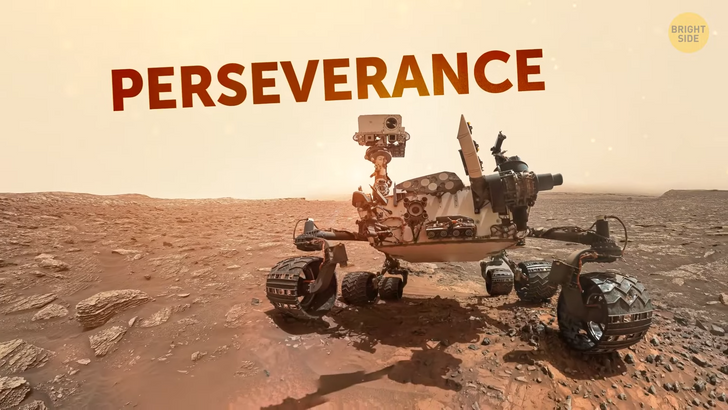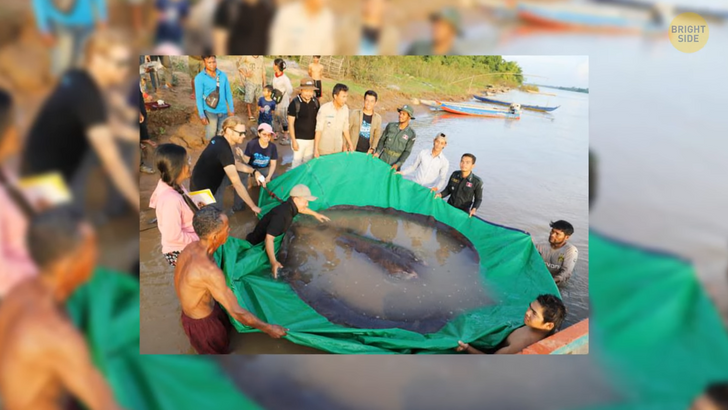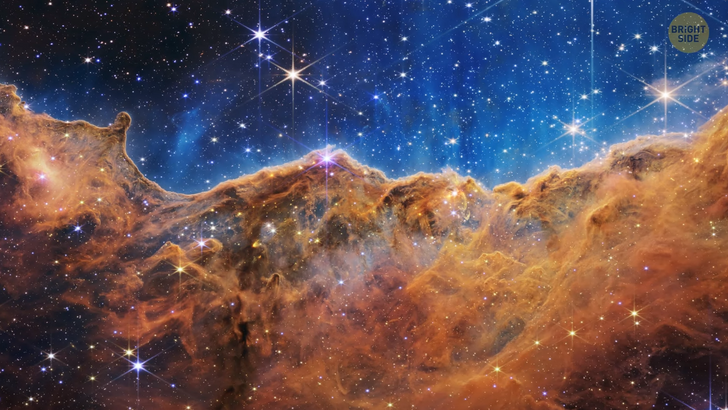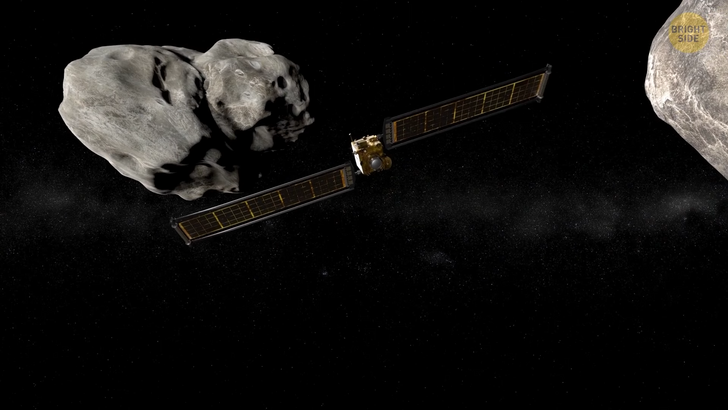“Too Bad She Couldn’t Accept Aging Gracefully,” Shania Twain, 58, Looks Shockingly Youthful in New Pic

The year 2022 was rich in amazing discoveries. Let’s have a look at the most impressive of them! The newest of NASA’s rovers, Perseverance, keeps exploring the surface of the Red Planet. Right now, it’s hunting for signs of ancient life in the Jezero crater.
That’s a 28-mile-wide impact crater. It was likely once filled with water. While trekking across the crater’s floor, the rover spotted several surprising things. One of them was a weird purple coating on a few rocks. It was strangely similar to rock varnish formed by microbes on our planet.

Scientists haven’t figured out what it is yet. The rover has also been very successful in adding new samples to its rock collection. It has got 14 pieces of rock — they will be stored on the surface of Mars for future missions to collect. NASA and the European Space Agency have been developing different plans for getting hold of these samples. Most of them involve a few spacecraft and even several helicopters.
How about something more “down-to-Earth”? In June, a giant freshwater stingray was discovered in the Mekong River in Cambodia. A fisherman called Moul Thun accidentally snagged it while fishing. He called researchers, claiming the stingray was way larger than anything he had ever seen.
The scientists arrived and found out that the creature measured 13 feet from snout to tail. It also weighed a staggering 660 pounds. This made it the largest freshwater fish that had ever been recorded. It was even certified by the Guinness World Records! Another animal-related discovery: scientists have found evidence that spiders might see dreams!
One scientist studying these creatures noticed that when snoozing, little arachnids jerked while dangling from a thread with their legs curled. It resembled the way cats and dogs twitch while dreaming. The researcher set up a whole lab to observe spiders. The resulting study revealed that jumping spiders indeed experienced a sleep-like state that included the rapid eye movement stage! And with 8 eyes, that’s a lot of twitching!

Researchers identified the remains of a 17th-century Spanish galleon. It was found near Oregon’s northern coast. Experts think that those are the remains of Santo Cristo de Burgos. In 1693, this vessel was traveling from the Philippines to Mexico. But at one point, it veered off its course and disappeared.
The lost galleon was known as the “Beeswax Wreck.” It got such a name because it was carrying blocks of beeswax. People had known about the ship for a long time since parts of its cargo were often washed up on shore. But until recently, no one knew the name of the ship. But then, researchers analyzed timbers discovered in a cave near Astoria.
The analysis revealed that those were made from hardwood used to build ships in Asia in the 17th century. Which meant the mysterious vessel was the perfect match for Santo Cristo de Burgos. Early in 2022, scientists noticed something alarming in West Antarctica. They already knew that the wedge of the continent sitting south of Argentina might raise the sea level by 10 feet. The thing is, our world is changing, and some of that ice is going to melt one day. But that’s not the worst news.

Experts spotted ominous hints that a massive collapse could occur really soon! A large ice shelf cracked suddenly. This ice shelf stops the ice sheet from slipping into the ocean and melting away. If this rupture widens, it might kick off a catastrophic chain reaction.
It was January when a submarine volcano known as Hunga Tonga-Hunga Ha’apai in the Kingdom of Tonga erupted. The event was unlike any other witnessed in recent decades. The blast was so powerful that it sent a pressure wave all over the globe — and it traveled around the world not once but several times! It also produced giant tsunami waves.
Scientists claim that everything about the eruption was extremely weird, for example, how insanely powerful it was or the cascade of effects that followed. The eruption excavated more than 2 cubic miles of rock from the seafloor, becoming the largest volcanic blast in the past 100 years. It also unleashed tons of volcanic rubble and hot ash that moved along the seafloor for a whopping 50 miles!
In January, scientists discovered a site in southeastern Australia with rocks that contained a breathtaking record of life. The fossils found at McGraths Flat are estimated to be from 11 to 16 million years old. Those are soft-bodied small creatures, including spiders. And they’re preserved in such extraordinary detail that you can even see the spiders’ leg hairs.

The researchers also managed to spot tiny pores in fossilized leaves. Those pores used to take in carbon dioxide. Scientists discovered several new snail species while searching for animals in Southeast Asia. And they believe that two of these species are the smallest of all seen before. One of them lives in Vietnamese caves and is a mere 0.02 inches in length.
If you decided to put them on a US quarter, many hundreds would fit there. Now, I bet you’ve heard of NASA’s James Webb Telescope. It’s a giant infrared instrument, and it’s floating in space millions of miles away from our planet. It spent the first part of 2022 preparing to take its first images. And in July, the world finally saw those pictures! The images of the cosmos taken by the telescope are incredibly detailed.
In fact, one picture was even called “the deepest view of the Universe ever.” Among other pictures, there is a now-iconic image of the Carina Nebula. Another one is a stunning view of Neptune’s rings. At the moment, the telescope has a long list of observations it has to do. It’s supposed to explore everything: from distant exoplanets to the oldest galaxies out there. You probably know that 65 million years ago, give or take, life on Earth changed forever after a 6.5-mile-wide asteroid crashed into our planet.
This catastrophic event caused a mass extinction, which, in turn, led to three-fourths of all species, including dinos, disappearing from the face of the earth. In February, scientists got exciting new information about the disaster. They studied some fish fossils and concluded that the asteroid had hit Earth during spring in the Northern Hemisphere. Another discovery was made in March.

It turns out that right after the impact, rocks started to rain down more than a thousand miles away from the impact site. And in August, scientists found something that could be a fragment of the asteroid off the coast of West Africa. It probably broke off and slammed into Earth separately, leaving an undersea crater.
Now, brace yourself. Earlier this year, scientists grew brain cells in a lab and taught them to play video games. Yeah, I know, that’s wild. Researchers from Australia claim they created the so-called “mini-brains” that could sense and respond to their environment. Each “brain” consisted of 800,000 cells.
When viewing video games, they produced electrical activity. And even though they often missed the ball in a particular game, the connection rate was higher than a totally random chance. A research team funded by the National Geographic Society discovered a curious fossil in August 2022. It belongs to the oldest dinosaur found in Africa. This guy, whose name I can’t pronounce. [Mbiresaurus raathi]
This ancient creature lived about 230 million years ago. It was one of the earliest ancestors of sauropods that we know about. This group includes such long-necked giants as the Brontosaurus. But unlike them, the dino we’re talking about wasn’t a giant. Scientists think it was probably a mere 2 ft tall at the hip.

And some more great news! We now know for sure how to nudge asteroids off track! NASA made a spaceship known as DART crash into an asteroid.
The main goal of this experiment was to check whether such a collision could change the course of the asteroid, knocking it off its orbit. This method could help us avoid a potentially catastrophic asteroid strike. The spacecraft — which cost $325 million and was the size of a vending machine — slammed into asteroid Dimorphos at a speed of 14,000 miles per hour. The spaceship burst into pieces right away.
But the mission still seemed to be a success since Dimorphos was indeed affected by the collision to a measurable degree. So maybe we won’t need Bruce Willis and his gang after all!











